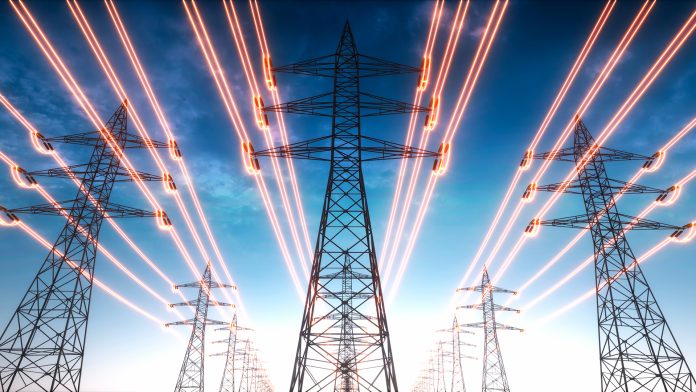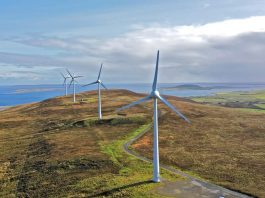Amir Cohen, CEO at EGM, discusses how efficient power grids will be crucial to mitigating climate change and meeting net zero targets.
Our power grids face a perfect storm of climate change and a mass of renewable technologies and electric appliances coming online that could cause an unprecedented capacity crunch. Recent reports indicate that net zero risks running into an electric grid bottleneck with insufficient capacity to support the massive integration of clean technologies envisaged by EU or UK targets. Scarce capacity keeps renewable energy sources locked out of the grid, causing localised congestion and extra electricity costs for consumers.
Climate change is further squeezing grid capacity with last summer’s heatwaves driving surging demand for air conditioning while raising overhead powerline temperatures and thus reducing their safe current-carrying capacity.
Yet the climate could also hold the key to a potential solution. Smart grids could anticipate and adapt to changing climate conditions, carrying more current during cooler conditions and accurately predicting their true maximum capacity in all weathers. This would reduce the need for expensive grid build-outs and safely increase the capacity of existing networks to support the energy transition.
The looming bottleneck on net zero
4.5 million EVs and 400,000 heat pumps will soon be jostling for space on our crowded power grids in London, the East and Southeast of the UK alone. The pattern is repeated across the EU, where 70 million electric vehicles and 600 GW of renewables will connect to power grids by 2030. This would heavily overtax existing grid infrastructure at a time when extreme weather events such as heatwaves are creating record demand and stresses on the grid. The UK alone spent £2.2bn managing grid congestion in the past three years. Capacity constraints mean that large amounts of clean energy resources essential to our net zero targets are being curtailed or caught in lengthy connection queues.
Eurelectric has warned that Europe’s creaking, congested grids now need major upgrades and expansion to shoulder the massive burden of millions of new electric appliances and renewables. Some suggest we would need to build enough new cables to reach the Sun by 2050 amidst projected aluminium price rises and manufacturing bottlenecks. The scale and speed of construction envisaged could involve a radical reduction of environmental reviews and community consultation and trigger conflicts with local people in the path of planned power lines. The anticipated grid expansion could cost up to €80bn a year in the EU alone. Crucially, there is little commercial benefit for operators to invest heavily in building out grids to integrate more renewables when most of the benefits accrue to society rather than to utilities.
Power grids for all seasons
While climate change and the associated energy transition are pushing our grids to the limit, the climate also holds the key to a potentially affordable solution. Currently, many network operators make static assumptions on the maximum safe current carrying capacity of overhead power lines based on rough estimates or data, such as weather forecasts that have wide margins for error. Dynamic Line Rating (DLR) is a way to accurately detect and predict current carrying capacity without overheating the network, allowing operators to take advantage of weather conditions to increase network capacity. For example, increased windspeeds have a cooling effect on power lines and reduce the sag which enables them to carry more current without exceeding safe temperature limits.
A DLR pilot in Israel recently saw the world’s first multi-sensing grid-monitoring systems installed on transmission lines to identify opportunities for extra capacity. The grid monitoring technology can measure the real temperature of the line while monitoring over 60 electrical, environmental, and physical parameters affecting the ampacity from windspeed to cable sag and current in real-time. The sensors are strategically scattered across sensitive points such as valleys prone to changing windspeeds or areas most exposed to sunlight. Just one set of sensors could accurately predict ampacity across 50km of power line with consistent current and voltage.

The pilot showed the technology could accurately predict the current carrying capacity of the line for up to 3 hours ahead while harnessing meteorological data to project longer term grid capacity. It demonstrated that power lines could be loaded an average of , than today, helping unlock massive extra capacity from existing networks to support surges in demand from EVs, heat pumps and phenomena such as heatwaves. Utilities currently set extremely cautious capacity limits in the absence of accurate grid temperature data, but the pilot showed that smarter data would allow these limits to be significantly exceeded without threatening safety.
Operators could use the technology to integrate more renewable energy sources on transmission lines and support greater loads on distribution lines from EVs, heat pumps and other appliances with existing infrastructure. Reducing congestion would avoid needlessly curtailing both renewable generating capacity and demand sources, such as EV fast chargers on distribution networks. Unnecessary grid expansions and upgrades could also be avoided.
Utilities could also model where and how upgrades could improve capacity, driving smarter and more cost-effective network improvements. This could help inform cost-effective upgrades such as the replacement of conductors with new materials that increase current carrying capacity on existing lines. The cumulative capacity that could be unlocked and shared across parallel lines could help operators defer investments in new grid capacity by up to five years.
Identifying opportunities to increase capacity could help operators share energy from faulty lines with parallel lines to avoid outages or capacity squeezes. The grid-monitoring system can also offer load balancing recommendations and even model new load conditions to find the optimal ways of maximising capacity using existing lines. Unlocking extra capacity would help integrate more clean energy into grids and avoid replacing renewables with dirty power sources during surges in demand.
The data can help model ‘what if?’ scenarios to predict the temperature and thus the true capacity of any part of the network across all weather conditions or parts of the day, creating a ‘network for all seasons. By accurately predicting the performance of power lines under extreme weather conditions, the technology could help better protect grids from climate change impacts such as heatwaves. Machine learning systems trained on past weather or environmental conditions can also autonomously predict how grids could increase capacity in similar future scenarios. The technology is creating self-learning power grids that grow progressively smarter with each weather event.
Climate change and the demands of the energy transition will require smart, flexible, and efficient grids that can rapidly adapt to a more fluctuating operating environment. Better understanding our climate and environment is also the key to unlocking greater capacity from existing grids while planning smarter infrastructure improvements and more climate-resilient networks.









